When it comes to planting fruit trees, there is no better time than fall for putting them in the ground!
Although fruit trees can be planted at any point throughout a growing season, autumn provides numerous advantages versus spring and summer.

Why Fall Is The Time To Plant Fruit Trees
A fall planting allows just enough time for the roots of a fruit tree to become established before winter. And that acclimation period is extremely important.
Excessive heat and sunlight can both make it difficult for new transplants to settle in.
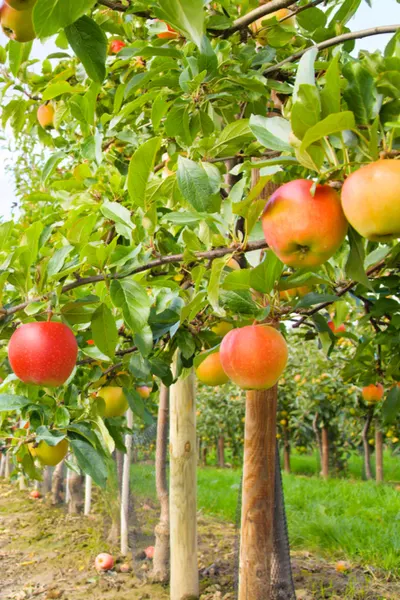
But autumn’s cooler temperatures, along with it’s shorter daylight cycles help trees acclimate with less stress.
And with lower heat and humidity levels, a tree’s root system is also less likely to dry out as well. And nothing is more important to a newly planted tree’s root system than water!
In essence, a fall planting sets the stage for a tree to be ready for fast growth the following spring. And more importantly, not have to spend all of it’s resources and efforts on simply surviving.
How To Plant Fruit Trees
Selecting The Right Fruit Trees
For starters, always select varieties that are hardy and tolerant to your growing zone.
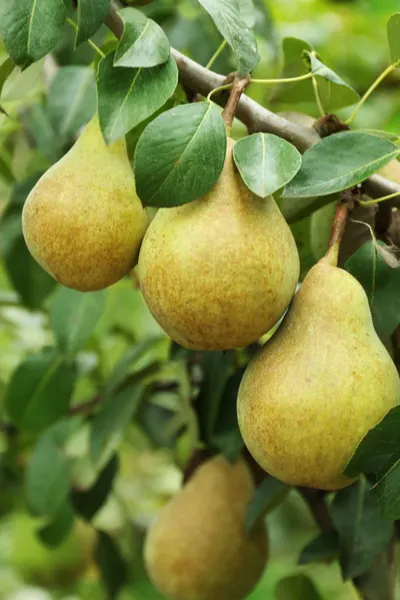
Local extension offices and nurseries are both great resources for knowing the trees that grow best in your area.
The Importance of Selecting Pollinators
Just as important is selecting varieties of fruit trees that can pollinate with each other.
Many fruit trees are not self-pollinating.
That means they are unable to pollinate on their own, and require a second tree in order to bear fruit. And in many cases, that doesn’t mean just a second tree of the same variety.
Self-sterile fruit trees require a completely different species of fruit tree to pollinate and produce fruit.
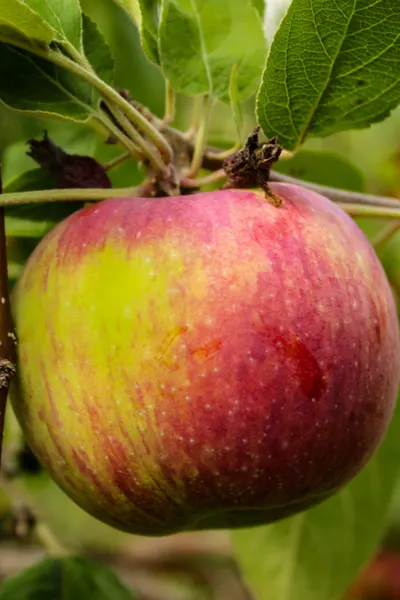
Although it can sound quite complicated, most nurseries have easy to read pollination charts that can help you select compatible varieties of fruit trees. ( See : 3 Great Apple Trees To Plant)
How To Plant Fruit Trees
So now that you know when and what to plant, it’s time to get digging!
Begin by creating a planting hole two to three times the diameter of the tree’s root ball. In addition, dig the hole to one and a half times the depth of the container as well.
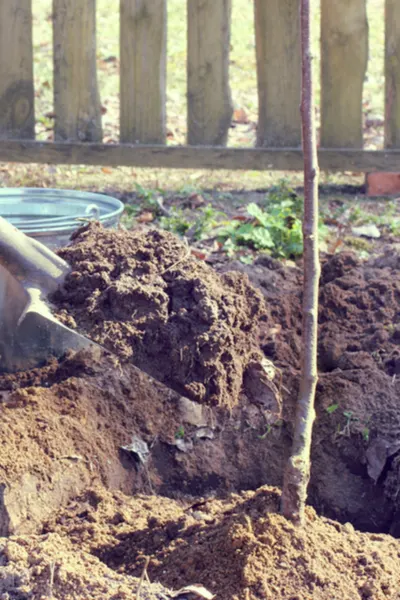
This allows plenty of space for the trees roots to expand and settle in.
Before planting, mix in equal amounts of compost and soil to the bottom of the hole. Fill the hole up enough so that the tree’s root ball sits an inch above the soil line. ( See : How To Make Great Compost)
The base of the trunk should be just above ground level. This allows for good drainage and root growth.
The Importance Of Watering Well
Next, water the entire root ball generously until the water pool around the hole. Allow the water to soak in, and then fill in the remainder of the hole with equal amounts of compost and soil.
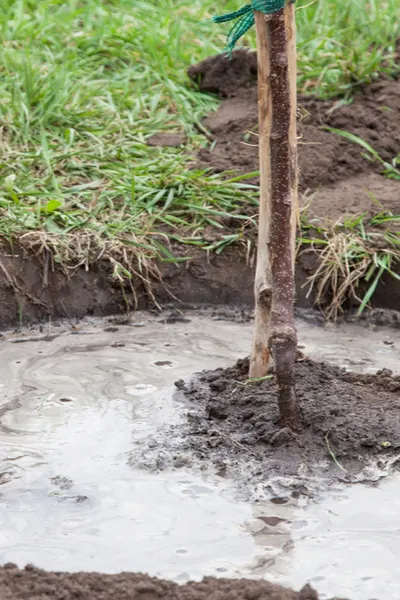
It is always a good idea to stake newly planted trees. Drive a stake in a few feet from the root ball, being careful to protect the trunk as you tie the tree off.
A piece of used garden hose works well to secure the line or rope around the trunk. It will keep the line from digging into the bark and damaging the tree.
Finish by applying a 2 to 3″ layer of mulch. This will help the tree retain moisture and protect the roots from heavy freezing and thawing throughout winter.
Continue to water the trees regularly through late fall every 3 to 5 days until winter sets in.
Spacing Multiple Trees
On average, dwarf trees should be planted about 8 to 10 feet apart. If planting in rows, allow at least 12 feet between rows.
For semi-dwarf trees, allow 10 to 12 feet between each tree, and 15 feet between rows.
When in comes to full size fruit trees, sizing and spacing can vary greatly. It is best with full size trees to follow the guide on the label for spacing requirement.
Here is to adding fruit trees to your landscape this fall!

This Is My Garden is a website dedicated to spreading the love and knowledge of gardening around the world. We publish two new garden articles each week. This article may contain affiliate links.
